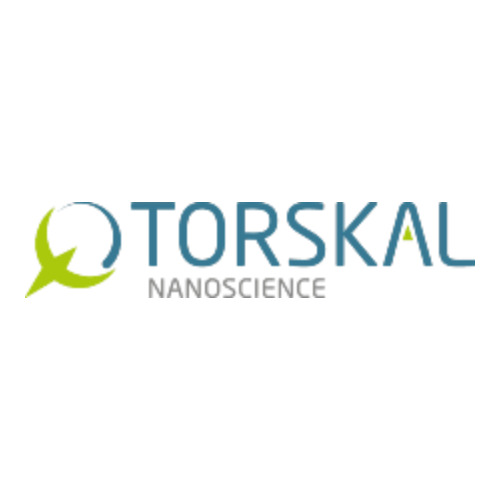


Discover how green synthesis of gold nanoparticles works using plant extracts to create eco-friendly nanomaterials for modern applications.
Saint-Denis, 26-6-2025– As industries shift toward environmentally friendly practices, the field of nanotechnology is witnessing a major transformation. One of the most compelling innovations in this space is the green synthesis of gold nanoparticles (AuNPs)—a method that replaces toxic chemicals with plant-based or biological agents. But a common question arises among students, scientists, and eco-conscious companies alike: How does green synthesis of gold nanoparticles work?
Gold nanoparticles are minuscule particles of gold that are typically between 1 and 100 nanometers in size. Due to their unique optical, electronic, and thermal properties, they have a wide range of applications in medicine, diagnostics, environmental sensing, electronics, and cosmetics. While conventional methods of synthesizing these nanoparticles often involve hazardous chemicals and energy-intensive processes, green synthesis offers an innovative and sustainable alternative.
This nature-friendly process harnesses biological materials such as plant extracts, bacteria, fungi, or algae to reduce gold ions into nanoparticles. It eliminates the need for harmful solvents and high-temperature reactions, making it not only safer for the environment but also for researchers and end-users.
Green synthesis begins with the selection of a biological reducing agent, most commonly a plant extract. Plants are rich in natural compounds like flavonoids, alkaloids, polyphenols, terpenoids, tannins, and sugars—all of which possess powerful reducing and stabilizing capabilities.
Here is a step-by-step overview of the green synthesis process:
The process starts with choosing a suitable plant or biological source. Researchers may use common herbs like Azadirachta indica (neem), Ocimum sanctum (tulsi), or even fruit peels, roots, or leaves. The selected parts are washed thoroughly to remove dust or chemical contaminants and then boiled or crushed in distilled water to extract the phytochemicals.
Once boiled, the solution is filtered to separate solid residues from the liquid containing the bioactive compounds. This plant extract is now ready to act as a reducing and capping agent for gold nanoparticle synthesis.
Gold nanoparticles are typically synthesized from chloroauric acid (HAuCl₄), which provides the gold ions (Au³⁺) needed for the reaction. This gold salt is dissolved in distilled water to make a precursor solution.
The plant extract is slowly added to the gold precursor solution while stirring continuously. Almost immediately, a noticeable color change occurs—from light yellow to shades of ruby red, purple, or violet—depending on the particle size and concentration. This visual shift is a result of surface plasmon resonance, a unique phenomenon that confirms the formation of gold nanoparticles.
To verify and analyze the synthesized nanoparticles, researchers employ a range of characterization techniques such as:
UV-Vis Spectroscopy: Confirms the absorption peak, typically around 520–550 nm for gold nanoparticles.
Transmission Electron Microscopy (TEM): Determines the size, shape, and distribution.
Fourier-transform Infrared Spectroscopy (FTIR): Identifies functional groups in the plant extract responsible for reduction and stabilization.
Dynamic Light Scattering (DLS): Assesses particle size distribution and colloidal stability.
The nanoparticles are stable over time due to the natural compounds in the extract acting as capping agents, preventing aggregation.
The significance of green synthesis goes beyond environmental impact—it aligns with the principles of green chemistry, which aims to reduce or eliminate the use and generation of hazardous substances.
✅ Eco-friendly – No toxic chemicals or harmful byproducts are used or produced.
✅ Cost-effective – Readily available natural resources make the process more economical.
✅ Biocompatible – Ideal for biomedical uses, especially in drug delivery and cancer therapy.
✅ Scalable – Can be scaled up for commercial or industrial production with minor adjustments.
Dr. Anne-Laure Morel, PhD, a nanotechnology researcher at
“Green synthesis is a revolution in materials science. It represents the intersection of sustainability and innovation, allowing us to use natural resources to craft advanced nanomaterials with minimal environmental cost.”
Gold nanoparticles synthesized through green methods have proven effective in several advanced applications:
Cancer Treatment: Used in photothermal therapy to target and destroy cancer cells.
Drug Delivery: Functionalized AuNPs can carry therapeutic agents directly to diseased cells.
Diagnostics: Serve as contrast agents in imaging or as biosensors for detecting specific biomarkers.
Water Treatment: Gold nanoparticles can bind and remove contaminants like heavy metals.
Pollution Monitoring: Utilized in sensor devices to detect environmental pollutants in real time.
Employed in printed electronics, solar cells, and nanochips due to their excellent conductivity.
Incorporated in skincare formulations for anti-aging and anti-inflammatory benefits.
Despite its advantages, green synthesis is not without challenges:
Reproducibility: Variations in plant extract composition can affect consistency.
Scalability: Industrial-scale synthesis requires optimization of plant growth, extraction, and processing.
Mechanistic Understanding: The exact chemical mechanisms behind some phytochemical reductions are still being studied.
To overcome these challenges, researchers are developing standardized protocols and exploring automation of the green synthesis pipeline. Future directions include using genetically engineered microbes, AI-optimized process control, and expanding the range of biological sources used in synthesis.
Is a pioneer in the field of sustainable nanotechnology, with a mission to develop eco-friendly nanomaterials for health, environmental, and industrial applications. We focus on responsible innovation by combining green chemistry principles with advanced material science, delivering high-performance solutions that respect both people and the planet.
Media Contact:
Torskal
How Green Synthesis of Gold Works
Phone: (+262) 262 93 88 31, (+262) 692 72 02 92
Email: [email protected]
Website: https://www.torskal.com
